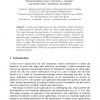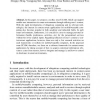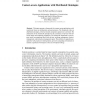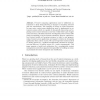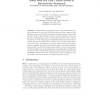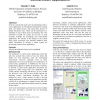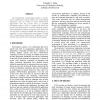DAIS
2007
14 years 7 months ago
2007
Context-aware applications use and manipulate context information to detect high-level situations, which are used to adapt application behavior. This paper discusses the specificat...
COORDINATION
2008
Springer
14 years 7 months ago
2008
Springer
Context-aware applications adapt their behavior depending on changes in their environment context. Programming such applications in a modular way requires to modularize the global ...
EUC
2006
Springer
14 years 9 months ago
2006
Springer
In this paper, we propose a toolkit, wear-UCAM, which can support mobile user interactions in smart environments through utilizing user's context. With the rapid developments ...
CAISE
2006
Springer
14 years 9 months ago
2006
Springer
This paper presents a framework for context-aware applications, with a particular focus on collaboration and pervasiveness. The framework relies on distributed ontologies, which ar...
ATC
2006
Springer
14 years 9 months ago
2006
Springer
Abstract. Pervasive computing applications must be sufficiently autonomous to adapt their behaviour to changes in computing resources and user requirements. This capability is know...
HUC
2009
Springer
14 years 10 months ago
2009
Springer
Intelligibility can help expose the inner workings and inputs of context-aware applications that tend to be opaque to users due to their implicit sensing and actions. However, use...
HUC
2003
Springer
2003
Springer
Is Context-Aware Computing Taking Control away from the User? Three Levels of Interactivity Examined
14 years 11 months ago
Abstract. Context-aware computing promises a smooth interaction between humans and technology but few studies have been conducted with regards to how autonomously an application sh...
CHI
2003
ACM
14 years 11 months ago
2003
ACM
iCAP is a system that assists users in prototyping contextaware applications. iCAP supports sketching for creating input and output devices, and using these devices to design inte...
VL
2003
IEEE
14 years 11 months ago
2003
IEEE
The educationally disadvantaged people in contextaware computing are those without any programming experience, and are unable to build context-aware applications with the current ...
MIDDLEWARE
2004
Springer
14 years 11 months ago
2004
Springer
We propose an adaptive middleware design for context-aware applications that abstracts the applications from the sensors that provide context. Further, we use application-specifi...
